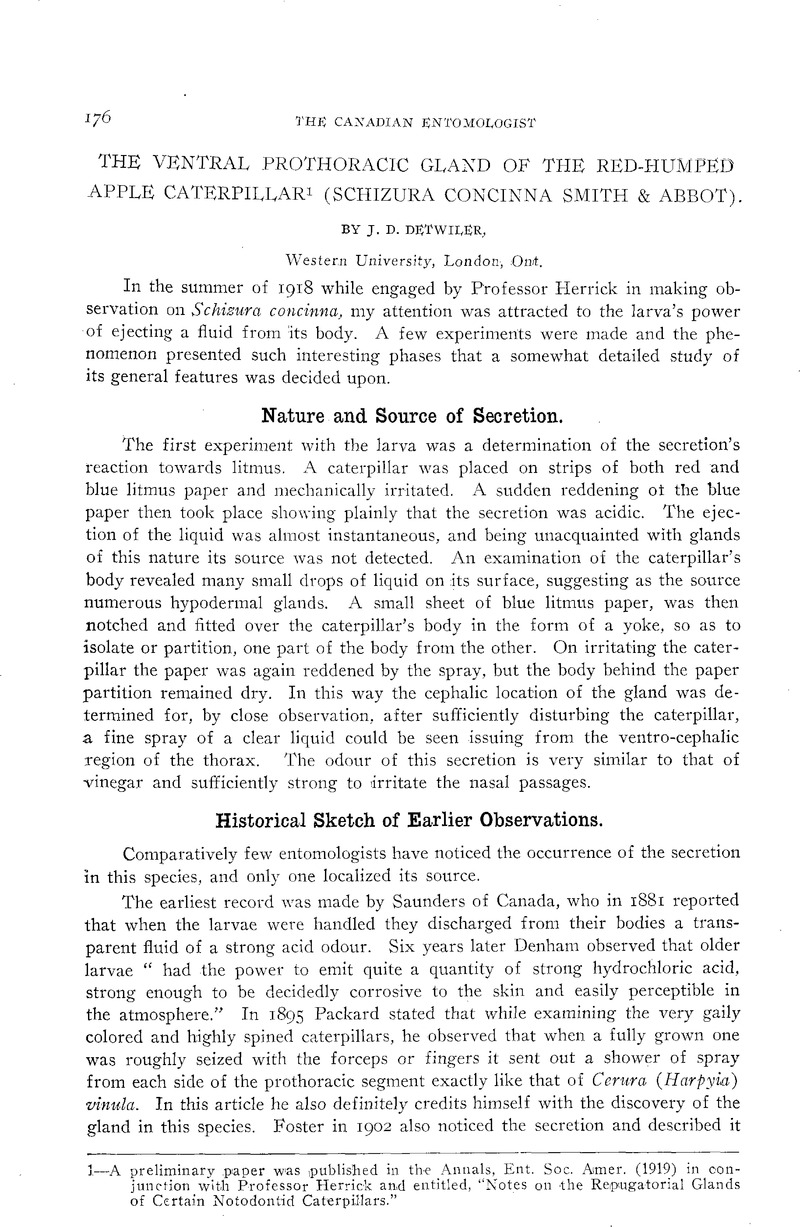Published online by Cambridge University Press: 31 May 2012

1 —A preliminary paper was published in the Annals, Ent. Soc. Amer. (1919) in conjuction with Professor Herrick and entitled, “Notes on the Repugatorial Glands of Certain Notodontid Caterpillars.”
2 —The articles referred to in the previous foot-note describes a series of experiments subsequently carried out by this method and also a diagram of the acutual range of the spray.
3 —For convenience these two divisions will be referred to as “bulb” and “sack” respectively, it being understood that the terms are not necessarily significant of their functions.
4 —Dimmock, A. K. 1882, notices a similar displacement in the cords of Harpyia vinula (an European species) and stated that is more pronounced in the earlieeer stages. I have not investigated this phase of the problem in S. concinna.
5 —As I recall, there was once instance where the cords passed the gland on the right.
6 —Although the bulb naturally stands more or less erect it will be considered, for descriptive convenience, as lying on the ventral body-wall and the antero-dorsal surface will be referred to as the dorsal surface. A similar consideration will apply to the other aspects of the bulb.
7 —In dissecting a number of Datanas (D. ministra, D. contracta, D. integerrima and D. angusii) I found that they too possessed glands somewhat similar to that of S. concinna, but evidently very much simpler in structure. In testing the contents of the gland of D. integerrima it also was found to be acidic. I might here add that I also experinted with Schizura unicornis and found that it secreted an acid fluid ad that the operation of the gland is practically the same as that of S. concinna. I have found no other record of ventral prothoracic glands in these species.
8 —It will be necessary to first dissect away the mass of body muscles and tracheae that occupy this region of the thorax.
9 —Computed from drawing made to scale. In this case the connecting tube was concealed by the dorsal lobe of the bulb and hence no measurement is given for it.
10 —On this account I have called them stellate cells.
11 —As the longitudinal axis of the bulb was not in perfect alignment with the knife, three of the series of the sections have been included for the sake of clearness.
12 —Note in figure 10 and 11 how conveniently the extruded apex is situated with regard to the Spinneret.
13 —For a general discussion of these glands see Dimmock (1882), Packared (1890) and Latter (1887). These authors also give regerences to literature while Packard (1896) devotes a paper entirely to literature on eversible glands. A very excellent study of the secretion of C. vinula is given by Poulton (1887), the glad having been well described by Klemensiewicz (1882). See also Berlese (1909).